France Day 4: Out in Cognac
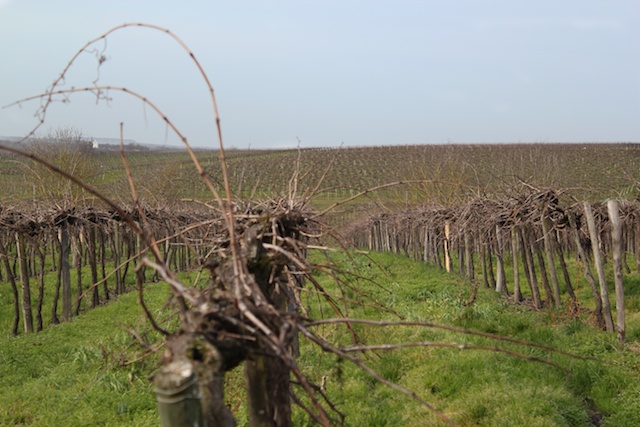
There's a huge difference between Cognac and Armagnac, and I'm talking about the regions rather the spirits. Cognac is like Napa, with large estates, boutique farmers, and vineyards covering every inch of valueable Grand Champagne property. Armagnac is like West Virginia in comparison - heavy forestation with backwoods country folk dwelling on pig farms, doing distillation if they have some spare time away from the corn field. There is a big difference between the brandies of Cognac and Armagnac as well. Here are a few things I learned today:
-Cognac producers like to make high alcohol wines because they can distill them to about 70% after two times through the still. Remember that Armagnac producers don't like to water down the spirit, so they produce low alcohol wines that come of the still at a drinkable 50% or so.
-Cognac is produced on a pot still, so the heads and tails are cut and only the hearts are kept, much like single malt whisky.
-Terroir plays a huge role in Cognac. Grand Champagne grapes, as opposed to Petit Champagne or Borderies grapes, produce wines with high acidity that result in spirits with the potential to age due to the chalky soils (Armagnac has very sandy soil). Like a great Bordeaux, Grand Champagne Cognacs can age gracefully for sixty or seventy years before reaching their true potential. The only difference is that the brandy must age in the cask. We tasted a 59 year old at dinner last night that still tasted too austere. It needed MORE time in the wood!
-Cognac barrels are toasted with a much lower char than Armagnac barrels. The wood influence is therefore more mild.
-The wine made from ugni blanc in Cognac tastes nothing at all like wine. I always imagined them distilling some drinkable, crisp white wine, but it's more like a yeasty lambic beer with insanely tart acidity.
-Vintages also play a big role in Cognac. The more austere the vintage, the more austere the wine, the more austere the spirit, the longer it takes to age and open up.
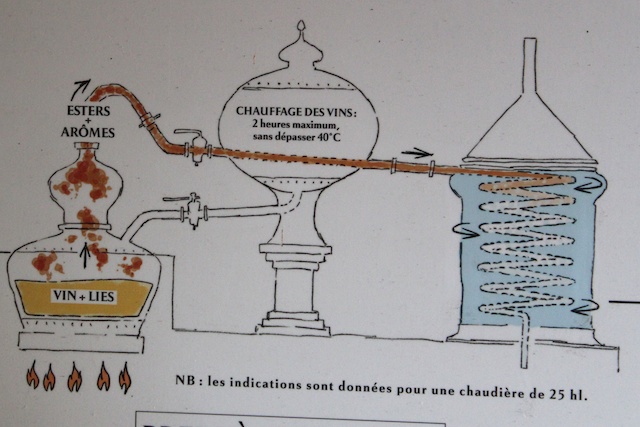
A Cognac still looks much like an Armagnac alambic still, except that there are no column plates that re-introduce the heavier vapors back into the wine. Unlike Armagnac, almost every Cognac producer has their own still somewhere on the property. By producer, I mean a person who actually grows the grapes, makes the wine, and distills the spirit. Hennessey, Remy Martin, or Martell for example are not producers. They are houses who buy Cognac from actual producers and blend them into their own brands. Cognac is much like Champagne in that it's completely controlled by a handful of large companies who dominate the market with heavy advertising. For that reason, Brandy geeks usually side with Armagnac for more interesting flavors, but we managed to visit a few producers of note today who had some pretty spectacular stuff.
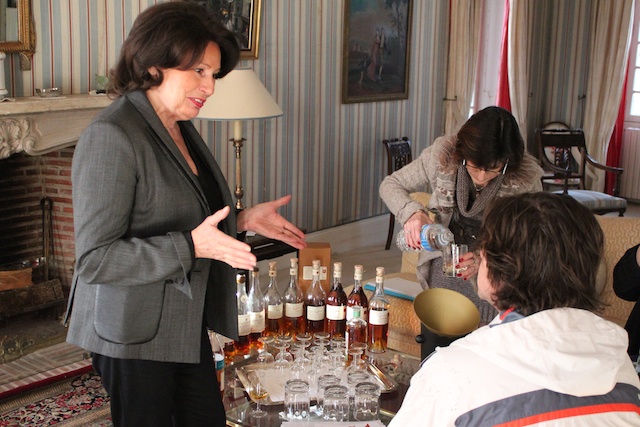
Our first stop of the morning was to Raymond Ragnaud, a producer whose Pineau des Charentes we've been carrying for sometime now. The original Ragnaud Cognac was produced by the Ragnaud family, but when the two brothers Raymond and Marcel took over they were unable to work together. The Domaine split and now there are two separate brands under the name of each brother. Raymond Ragnaud is still produced on the original estate and is now overlooked by his daughter, Mrs. Ragnaud-Bricq pictured above.
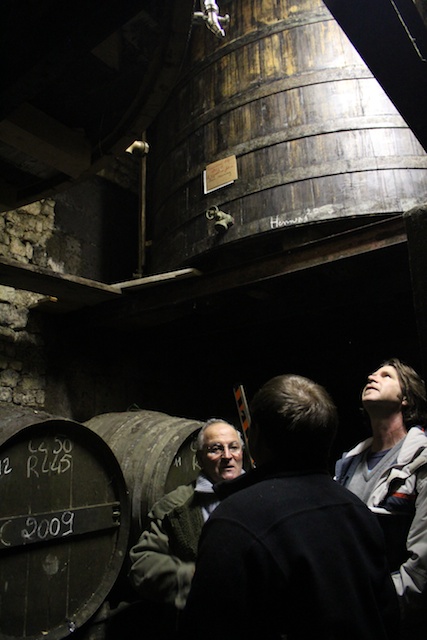
Jean-Marie has been the distiller at the property for the last thirty years. He took us down into the cellar for some cask tasting and a lesson on barrel aging. Like Armagnac, the Cognac producers believe in aerating the spirit by changing casks every six months to a year. We tasted a few out of the cask, but Grand Champagne Cognac doesn't taste all that great in its youth - and by "youth," I mean anytime in the first twenty years of its life. Usually the blends have more complexity because the young brandy is balanced by an older vintages. We tasted some very fine blends that we might be bringing back to the states. Their Reserve Rare was very gentle and tasted of toasted almonds with soft stone fruits. We also enjoyed the Trés Vieille, which is made entirely of 1948 vintage brandy and has a rich, rancio finish. Cognac finishes can last for minutes and evolve on the palate long after the spirit has vanished

Our next visit was to François Voyer, a small grower-producer in Grand Champagne not too far from Ragnaud. They hold about 29 hectares of vineyard and another 15 outside the region from which they make Cognac from Hennessey. Apparently, now is a good time to be a supplier for the big houses. With the asian market increasing its demand, there simply isn't enough Cognac to go around. That has increased prices and profitability for smaller producers like Voyer who can always sell off what they don't sell themselves.
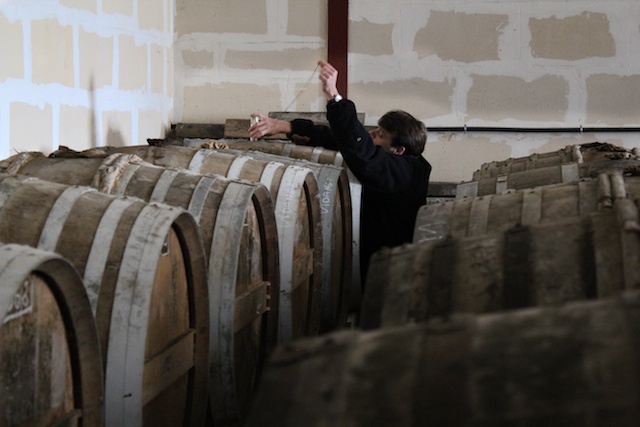
Cellar master Pierre Vaudon took us on a tour of the estate and took some cask samples for us. We weren't too blown away by any one expression, but Cognac has never been about the single cask - it's a spirit based in the blend. However, we still wanted something unique, so we decided to choose our favorite single casks and describe what we liked about them. After a few hours, we had crafted together four different blends from various vintages and ages that were based on our recommendations and desires. With any luck, we'll be bringing a few of these in on a larger scale later this summer. The finesse of these brandies when put together is remarkable.
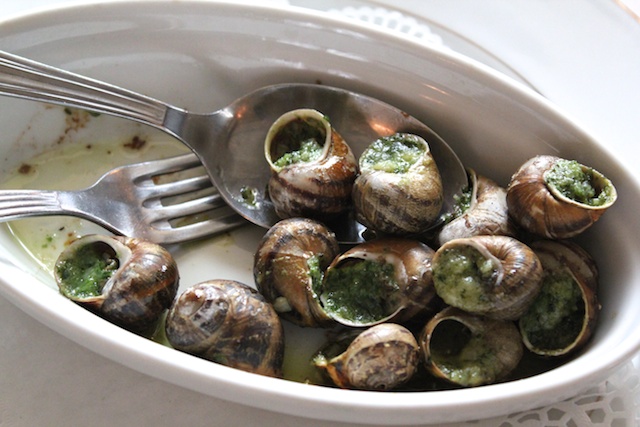
LUNCH TIME! When in France....
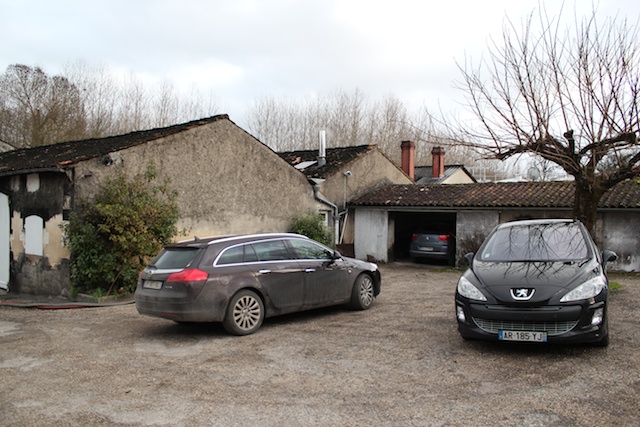
Pulling up the road into Jaques Esteve's driveway, one would never think that there was Cognac being produced anywhere near the area. Under the garage, however, there's a full scale operation going on.
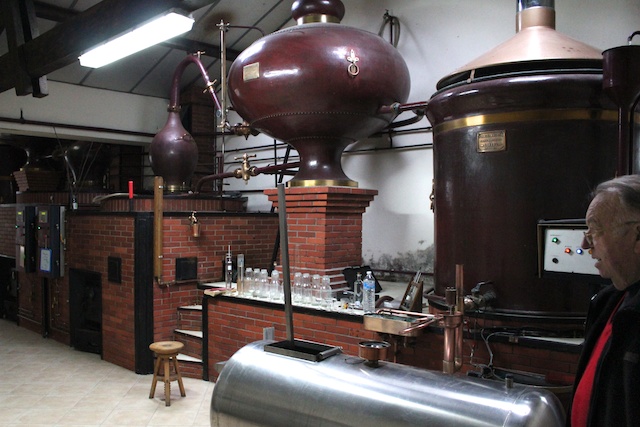
Jaques was in the middle of distilling when we arrived and he's thrilled about the market at the moment. He produces for both Remy and Hennessey and it's easy to see why they're both after his stuff. Even though he's in Petit Champagne, he's located about one kilometer from the border of Grand Champagne so there's virtually no difference between his brandy and the best of the best.
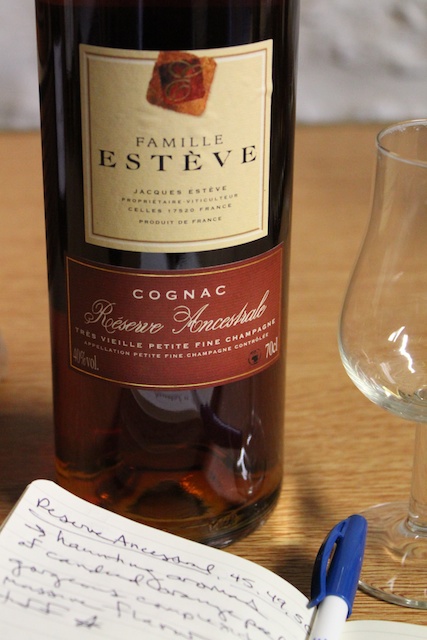
Being in a bit of a hurry, we went right into the tasting bar to begin sampling his goods. Boy, does Jaques ever have "the goods." His Reserve Ancestrale is a blend of 1945, 1949, and 1950 vintages and is absolutely stunning. The aromas are haunting, drifting between rancio, candied orange peel, and beautiful toffee notes. The palate has massive flavor and richness. We'll probably grab a few cases of this.
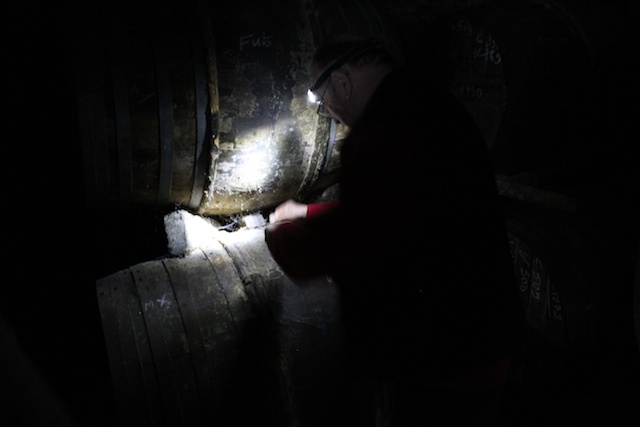
We asked Jaques if we could sample some casks and he looked at us like we were crazy. "Why would you want to do that?" he asked. He complained about getting spiderwebs all over his coat, but he acquiesed and agreed to take us out back and underneath the barn, down into the chai for some serious spelunking. It was worth the effort. Down in the dark was a simply awe-inspiring 1979 cask that was the best thing I've yet to taste on this trip. A powerful, woody Cognac with pencil shavings and sweet fruit on the nose, along side dark chocolate, almonds, earth, and citrus on the palate. The finish lasted for ten minutes and I almost hit my head on the ceiling as I jumped up with joy. We'll be taking this one.
The rest of the evening we spent with a negotiant with whom we'll be working on a few special labels just for us. We all had dinner at a fantastic Michelin starred restaurant in downtown Cognac before calling it a day. More awaits us tomorrow. Until then.
-David Driscoll
